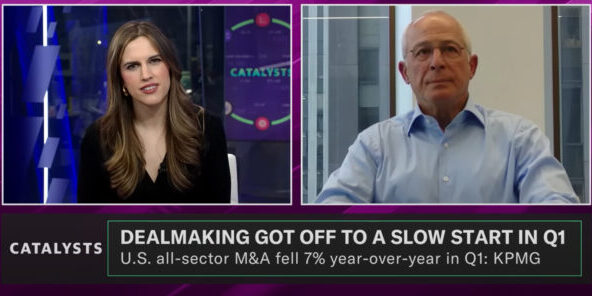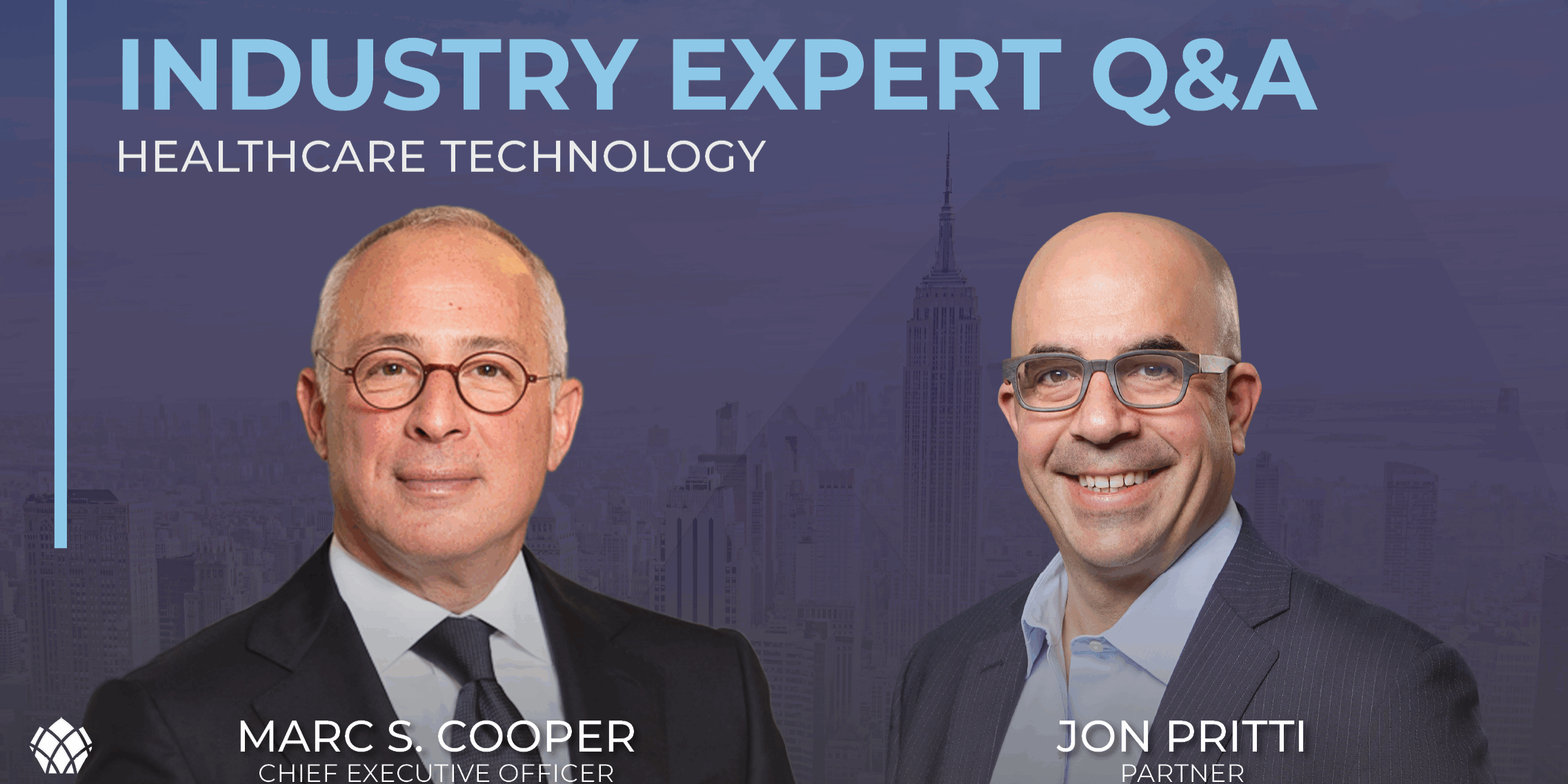Industry Q&A – Marc Cooper with Karan Garg
Industry Q&A – Marc Cooper with Karan Garg
by CEO Marc S. Cooper
Solomon continues to expand our Healthcare practice. In Q4 of last year, Karan Garg joined us as a Partner and Head of Healthcare Services where he works closely with Jon Hammack who oversees our Healthcare group. This month, I spoke with KG about his transition to Solomon Partners and his outlook on the healthcare services sector. Here are excerpts from our conversation.
KG you are our most recent partner addition, tell us a little about your background.
Prior to joining Solomon Partners, I spent 15+ years at Houlihan Lokey where I was a Managing Director primarily covering healthcare services, and more specifically, provider-focused businesses in multi-site healthcare, and specialty physician platforms. I started my investment banking career as an Analyst in Houlihan Lokey’s Healthcare group in 2004.
After more than 15 years at one firm, you decided to join Solomon Partners. Why?
I saw a tremendous opportunity to help develop a leading healthcare services practice at a firm with such positive momentum and a culture built on honesty, integrity, and a commitment to providing clients with sound, unbiased advice. I also recognized the high quality of the existing team and the recent hires, some of whom I worked with at my prior firm, such as Craig Muir and Joe Watson who joined last year to build Solomon’s Technology group.
I also have an entrepreneurial itch and saw joining Solomon as the closest thing to starting a healthcare services platform from scratch, while still having an established platform with top-notch support and a great group of colleagues.
What are some of the areas you are focusing on within healthcare services?
I’ve spent over a decade advising clients in sectors such as oral health, orthopedics, gastrointestinal, anesthesiology, etc. My partner Brad Hildebrand, whom I have worked with for nearly 10 years, complements the areas that I cover very nicely as he focuses on urgent care, physical therapy, vision, veterinary services, and more.
These are massive sectors and among the fastest-growing areas in the healthcare space today. There are a lot of private equity-backed companies, and it is an extremely active sector transaction-wise. Our long-term vision is to add more senior bankers who are sub-sector specialists and branch into additional areas such as healthcare technology, pharma services, and behavioral health.
How was 2023 for the healthcare sector?
After the record highs in 2021 and 2022, last year was a bit of a reset. The shutdowns and lockdowns had a profound impact on the healthcare system, and we saw a few things play out. First, a very rapid bounce back in patient and procedure volumes in late 2020 and 2021 followed by meaningful pent-up demand. Second was the great resignation, which contributed to staffing shortages and spurred a significant increase in wages in the healthcare space thereby causing significant margin pressure in the sector. As the pent-up demand eased and inflation rose in 2023, we saw patients being selective in spending on elective or non-essential procedures, contributing to muted volume. Lastly, these sectors are massively fragmented, so there is a huge opportunity for consolidation. However, with interest rates increasing, both private equity and strategic acquirers were more selective when evaluating opportunities in sectors largely driven by consolidation-based growth strategies. Hence, M&A activity was down for the healthcare sector last year and for US M&A in general.
What are your expectations for the healthcare services sector this year?
Looking toward the rest of 2024, we see some green shoots appearing, whether it is inflation curbing or that interest rates have peaked and will likely decrease. Consumer spending is solid, GDP is better than expected, and lending markets are opening up.
With $2.8 trillion of unrealized private equity asset value sitting on the books, we see 2024 being fairly good. We are cautiously optimistic about the pace of M&A activity in the market, and my team and I have a number of mandates we’re working on. We feel that investors will come back to these sectors, seeing it as a perfect opportunity to enter, especially if they have a longer-term view of where the market is going.
You spend a lot of time advising oral health companies. Give us a pulse on this massive $160 billion sector.
We have completed around 50 transactions in the oral health space over the last 10 years, with a total transaction value of over $20 billion. We have a good pulse on the market and investor appetite, which continues to be there for market-leading companies that have a strong organic growth engine and a differentiated mousetrap, whether it is by delivering superior value and experience to patients and providers or focusing on a high growth specialties like oral surgery or implants. There are more than 100 private equity-backed companies in this space, and we will continue to see M&A activity in the sector.
There are two things that should drive activity in this space. The first is companies that are focused on growth will continue to recapitalize and partner with private equity. The second is the consolidation of consolidators. There are many small to medium-sized companies that either need to merge to enjoy economies of scale or consolidate with a larger strategic player for their next phase growth and evolution.
This sector could do very well in the public markets, and when the IPO market reopens, there should be several companies that have robust business models and have gained meaningful scale that can go public.





